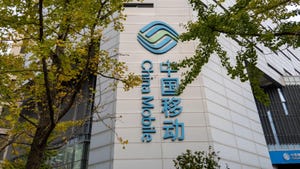Customer Experience: Digital Nomads (Really) Do Matter
Beyond seamless connectivity, this fast growing segment of high-intensity data users also need tailored bundles and silo-free problem solving.
November 26, 2013

I like to call them the digital nomads. Like me, they're always connected with ever increasing expectations of connectivity that just works. This nomadism is not a demographic characteristic but rather a behavior: heavy engagement with data, independent of location, but not mobile.
That's right, it's not about moving around, it's about sitting down and doing your thing wherever you happen to feel like doing it. That could be in a café, at home, in the office, on the park bench. Whatever, wherever. And it's certainly a multi-device phenomenon -- sometimes a tablet, other times a larger-than-average smartphone (aka phablet) or a sleek laptop. Most nomads own or use several, and many of those devices, especially the tablets, are increasingly shared.
The 'It just works' connectivity experience
The challenge for communications service providers is that the service demanded by these nomadic customers is far removed from some of the established paradigms in legacy fixed and mobile services, including the very notion of "fixed" and "mobile" services. No question, the first thing a digital nomad wants is a seamless connectivity experience: that might originate on WiFi via broadband (at home or in a café), a 4G macro cellular network, or citywide small-cell and WiFi networks.
Seamless connectivity is a straightforward enough concept, but challenging for a couple of reasons. First, the high data intensity of nomads eventually means smaller cell sizes (as described in my earlier piece on Organizing for Data Excellence). And smaller cells means a lot more backhaul and civil works that makes the overall economics challenging and drives the need for new sharing and wholesale arrangements. That in turn means there are more parties involved in the delivery chain to get broadband to where that user has chosen to get connected. (See Organizing for Data Excellence.)
Next there's the challenge of getting a common policy and authentication approach so that the connectivity just works whether it originates on fixed broadband, cellular, or urban WiFi -- technologies with quite different and uncoordinated authentication approaches. So "seamless" has two dimensions -- across providers, and across technologies.
Letting customers buy what they actually want
Seamless is good. But not so "seamless" that customers don't get the feedback needed to avoid "bill shock" if sometimes the seamless connectivity is much more expensive than other times. In fact the bill and (more importantly) the bundle on which it is based are another area where the paradigm needs to change. By definition, a nomadic user is not interested in fixed or mobile data plans, nor are they naturally attracted to plans that are associated with a particular device. They would like a plan that meets connectivity requirements at a reasonable and predictable price regardless of the device.
But that's not all. The most compelling plans will likely accommodate device sharing, at least between the members of the same family (i.e. one plan to accommodate all the data use of the family in the various connectivity modes). For many operators this is a significant systems challenge -- the legacy data structures often just don't provide the flexibility required.
Moreover, there is no way that the bundle that is most compelling to a nomadic user is just about connectivity. And no, I'm not talking content bundling, at least not for that significant (mostly younger) tranche of the nomadic community who no longer even care about television. It's about bundling cloud services (such as additional cloud storage for a photo collection) and tailoring the data plan/experience with options that match a particular user's social networking and online media preferences.
Helping customers help themselves
The resulting proposition should be very straightforward -- a basic price per month for connectivity that just works regardless of where you are, for a certain number of devices for a particular family or business (plus a small number of compelling cloud-centric optional add-ons).
The challenge is that no matter how simple we can make the proposition, there is an overwhelming complexity to how the service gets used: many family units each with several users, each with several devices, each running several applications across several different connectivity modes. The 21st century equivalent of "one number to call" needs to be quite the opposite -- a choice of problem-solving alternatives, either doing it myself on-device or online, or interacting with an agent via any one of several channels, including social media. The good news is that there are some underlying foundations that are common to enabling all these channels -- device management, network and device analytics, and of course the CRM and contact center applications.
That's all good in theory, but again the legacy split between different parts of the business gets in the way of getting systems that can solve problems across different connectivity modes.
The opportunity is now
Students of telecom history may recall that in 1985 Vodafone boldly predicted it would one day sell 1 million mobile phones. It sounds quaint today, but the fact is that, a decade later, mobile penetration in the UK was still at 7% and it wasn't until the turn of the century that the mobile "explosion" really took off. Just as mobile behavior became the norm, so data-intensive nomadic behavior will presumably become the norm for most people. It's already well on its way, and the adoption curve is clearly much shorter this time: If we take tablet sales and installed base as a proxy, we have a global compound annual growth rate of around 40-50% through 2016.
With that level of demand growth, time is clearly of the essence, so immediate focus is required on breaking down the barriers between legacy silos and getting the foundations right to offer seamless connectivity, compelling bundles, and quick resolution of problems. In my view, those service providers that succeed on all three fronts really do have an unusual opportunity to differentiate their offerings and impact long term market share.
— Philip Carden, founding partner, Number Eight Capital
Read more about:
EuropeAbout the Author(s)
You May Also Like












